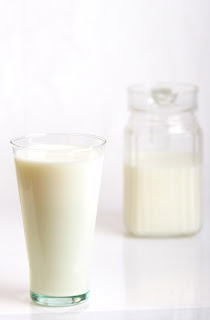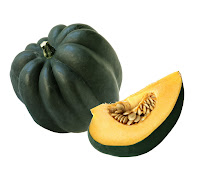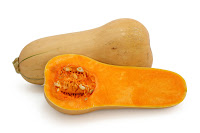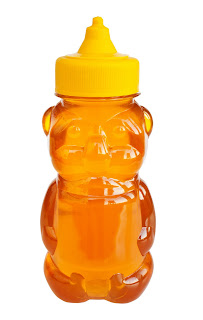Answer: Busted!
Many people believe that added fiber has the same health benefits as the fiber naturally found in foods. The fiber that is added to foods is called functional fiber. Functional fiber does not have the same properties as the fiber found in whole grains, fruits and vegetables.
Natural dietary fiber is divided into two categories: soluble and insoluble. The soluble dietary fibers become viscous in water and lowers cholesterol by escorting it out of the body. Lower cholesterol levels help reduce the risk of heart disease and stroke.
Insoluble fibers add stool bulk and promote regularity. Insoluble fiber is not digested in the stomach or small intestine. It gets transported to the large intestine where it has the main effects. Bacteria ferment the fiber causing an increase in the acidity of the large intestine. This increased acidity leads to many health benefits, including a decrease in inflammation, an increase in immune function and increased calcium and mineral uptake. Further, many illness-causing pathogens don't tolerate the acidic environment and die before causing disease. Fiber in the large intestine also helps to add bulk to stool, helping to decrease constipation.
Functional fiber is a non-digestible carbohydrate that has been shown to have some fiber benefits, yet studies are not clear. Similar to soluble fiber, functional fibers are often soluble in water but they are not always 'sticky' and therefore can't lower cholesterol levels the way that soluble fiber can. Functional fiber does seem to increase stool bulk and help decrease constipation.
The basic idea is that while it is okay to get some of your fiber from these added sources, it is not okay to get all of your fiber from added sources. The key is variety, so try to get your fiber from a variety of different sources.
Americans get far too little fiber—about half of what is recommended. We need about 14 grams of fiber per 1,000 calories.
For more nutrition and health information, visit the MissouriFamilies website.
Contributor: Maude Harris, Nutrition and Health Education Specialist, University of Missouri Extension, harrismau@missouri.edu, 573.545.3516
Tuesday, November 30, 2010
Myth: Foods that have "added fiber" have the same health benefits as foods that contain natural fiber.
Labels:
Fiber,
Healthy eating
Monday, November 29, 2010
Myth: A snowstorm knocked down my power lines, so I can put the food from the refrigerator and freezer out in the snow to keep it at a safe temperature.
Answer: Busted!
The outside temperature could vary hour by hour, so the temperature outside will not protect refrigerated or frozen food. Frozen food can thaw if it is exposed to the sun’s rays even when the temperature is very cold outside. Refrigerated food may become too warm and food-borne bacteria could grow.
Something else to consider is the food could be exposed to unsanitary conditions or to animals. Animals may harbor bacteria or disease so never consume food that has come in contact with an animal. Rather than putting the food outside, consider taking advantage of the cold temperatures by making ice. Fill buckets, empty milk cartons or cans with water and leave them outside to freeze. Then put the homemade ice in your refrigerator, freezer or coolers.
Additional food safety information can be found on the MissouriFamilies website.
Contributor: Maude Harris, Nutrition and Health Education Specialist, University of Missouri Extension, harrismau@missouri.edu, 573.545.3516
The outside temperature could vary hour by hour, so the temperature outside will not protect refrigerated or frozen food. Frozen food can thaw if it is exposed to the sun’s rays even when the temperature is very cold outside. Refrigerated food may become too warm and food-borne bacteria could grow.
Something else to consider is the food could be exposed to unsanitary conditions or to animals. Animals may harbor bacteria or disease so never consume food that has come in contact with an animal. Rather than putting the food outside, consider taking advantage of the cold temperatures by making ice. Fill buckets, empty milk cartons or cans with water and leave them outside to freeze. Then put the homemade ice in your refrigerator, freezer or coolers.
Additional food safety information can be found on the MissouriFamilies website.
Contributor: Maude Harris, Nutrition and Health Education Specialist, University of Missouri Extension, harrismau@missouri.edu, 573.545.3516
Labels:
Food safety
Wednesday, November 24, 2010
Myth: I will have eight guests for Thanksgiving dinner, so I need to purchase two (10 to 12 pound) turkeys.
Answer: Busted!
You only need to estimate one pound of turkey for each person. That’s enough for ample portions and leftovers.
If additional guests are added to your list, do not worry: A larger turkey (over 16 pounds) can serve two people per pound, as they tend to have more meat per pound.
Check out other myths regarding preparing and serving meat. Additional nutrition and health information can be found on the MissouriFamilies website.
Contributor: Maude Harris, Nutrition/Health Education Specialist, University of Missouri Extension, harrismau@missouri.edu, (573) 545-3516
You only need to estimate one pound of turkey for each person. That’s enough for ample portions and leftovers.
If additional guests are added to your list, do not worry: A larger turkey (over 16 pounds) can serve two people per pound, as they tend to have more meat per pound.
Check out other myths regarding preparing and serving meat. Additional nutrition and health information can be found on the MissouriFamilies website.
Contributor: Maude Harris, Nutrition/Health Education Specialist, University of Missouri Extension, harrismau@missouri.edu, (573) 545-3516
Tuesday, November 23, 2010
Myth: Almond milk and cow’s milk are the same thing.
Answer: Busted!
Almond milk is a beverage made from ground almonds and water. It can be used as a vegan substitute for dairy milk in many recipes, but it does have a different taste than dairy milk. It is also more expensive than cow’s milk.
A 1-cup serving of unsweetened almond milk supplies around 90 calories. It contains approximately 3 grams of fat, 1 gram of fiber, 1 gram of protein, and supplies 30 percent of your daily calcium intake. It is free of cholesterol and saturated fat and is rich in vitamins and minerals and omega fatty acids.
A 1-cup serving of whole cow’s milk contains 145 calories. Reduced-fat milk has fewer calories. It contains approximately 8 grams of fat, 8 grams of protein, and supplies 30 percent of your daily calcium intake. It does contain cholesterol and saturated fat, but it is also rich in vitamins and minerals.
The Dietary Guidelines for Americans recommends 2 cups or equivalent per day of low-fat or fat-free milk for children ages 2-8 years. For children over 9 years and adults, the recommendation is 3 cups or equivalent per day.
Additional nutrition information can be found on the MissouriFamilies website.
Contributor: Maude Harris, Nutrition and Health Education Specialist, University of Missouri Extension, harrismau@missouri.edu, (573) 545-3516
Almond milk is a beverage made from ground almonds and water. It can be used as a vegan substitute for dairy milk in many recipes, but it does have a different taste than dairy milk. It is also more expensive than cow’s milk.
A 1-cup serving of unsweetened almond milk supplies around 90 calories. It contains approximately 3 grams of fat, 1 gram of fiber, 1 gram of protein, and supplies 30 percent of your daily calcium intake. It is free of cholesterol and saturated fat and is rich in vitamins and minerals and omega fatty acids.
A 1-cup serving of whole cow’s milk contains 145 calories. Reduced-fat milk has fewer calories. It contains approximately 8 grams of fat, 8 grams of protein, and supplies 30 percent of your daily calcium intake. It does contain cholesterol and saturated fat, but it is also rich in vitamins and minerals.
The Dietary Guidelines for Americans recommends 2 cups or equivalent per day of low-fat or fat-free milk for children ages 2-8 years. For children over 9 years and adults, the recommendation is 3 cups or equivalent per day.
Additional nutrition information can be found on the MissouriFamilies website.
Contributor: Maude Harris, Nutrition and Health Education Specialist, University of Missouri Extension, harrismau@missouri.edu, (573) 545-3516
Labels:
beverages
Monday, November 22, 2010
Myth: I should flush my expired prescription drugs and medications down the toilet.
Answer: Busted!
According to the Food and Drug Administration (FDA), consumers should take certain precautions before tossing expired medication. A few drugs can be flushed down the toilet. However, many drugs can be thrown in the household trash. And a growing number of community-based "take-back" programs offer safe disposal alternatives. These programs allow the public to bring unused drugs to a central location for proper disposal. Call your city or county government's household trash and recycling service to see if a take-back program is available in your community.
Guidelines for Drug Disposal
In February 2007, the FDA worked with the White House Office of National Drug Control Policy (ONDCP) to develop the first consumer guide for proper disposal of prescription drugs. A summary of the federal guidelines include:
Contributor: Maude Harris, Nutrition and Health Education Specialist, University of Missouri Extension, harrismau@missouri.edu, (573) 545-3516
According to the Food and Drug Administration (FDA), consumers should take certain precautions before tossing expired medication. A few drugs can be flushed down the toilet. However, many drugs can be thrown in the household trash. And a growing number of community-based "take-back" programs offer safe disposal alternatives. These programs allow the public to bring unused drugs to a central location for proper disposal. Call your city or county government's household trash and recycling service to see if a take-back program is available in your community.
Guidelines for Drug Disposal
In February 2007, the FDA worked with the White House Office of National Drug Control Policy (ONDCP) to develop the first consumer guide for proper disposal of prescription drugs. A summary of the federal guidelines include:
- Follow any specific disposal instructions on the drug label or patient information that accompanies the medication. Do not flush prescription drugs down the toilet unless this information specifically instructs you to do so.
- If no instructions are given, throw the drugs in the household trash, but first:
- Take them out of their original containers and mix them with an undesirable substance, such as used coffee grounds or kitty litter. The medication will be less appealing to children and pets, and unrecognizable to people who may intentionally go through your trash.
- Put them in a sealable bag, empty can or other container to prevent the medication from leaking or breaking out of a garbage bag.
- Before throwing out a medicine container, scratch out all identifying information on the prescription label to make it unreadable. This will help protect your identity and the privacy of your personal health information.
- Do not give medications to friends. Doctors prescribe drugs based on a person's specific symptoms and medical history. A drug that works for you could be dangerous for someone else.
- When in doubt about proper disposal, talk to your pharmacist.
Contributor: Maude Harris, Nutrition and Health Education Specialist, University of Missouri Extension, harrismau@missouri.edu, (573) 545-3516
Labels:
Environment
Friday, November 19, 2010
Myth: I should remove chicken skin before I cook it to reduce the fat content.
Answer: Busted!
It makes little difference in the fat content if the skin is removed before or after cooking. The meat is more moist and tender when cooked with the skin. You can eliminate about half the fat by trimming away the skin before eating the meat.
The USDA Food Safety and Inspection Service offers more information on poultry preparation. Additional nutrition and health information can be found on the MissouriFamilies website.
Contributor: Maude Harris, Nutrition/Health Education Specialist, University of Missouri Extension, harrismau@missouri.edu, (573) 545-3516
It makes little difference in the fat content if the skin is removed before or after cooking. The meat is more moist and tender when cooked with the skin. You can eliminate about half the fat by trimming away the skin before eating the meat.
The USDA Food Safety and Inspection Service offers more information on poultry preparation. Additional nutrition and health information can be found on the MissouriFamilies website.
Contributor: Maude Harris, Nutrition/Health Education Specialist, University of Missouri Extension, harrismau@missouri.edu, (573) 545-3516
Labels:
Meat
Friday, November 12, 2010
Myth: Adding salsify to your recipes can make your product bitter in taste.
Answer: Busted!
Salsify is a white-fleshed vegetable root that could easily be mistaken for a yellowish gray carrot or parsnip. The salsify plant, which is 10 to 12 inches in length and has a diameter of about 2 1/2 inches, is cultivated primarily for its slender edible roots, although the young tender leaves, often called “chards,” are commonly used in salads.
The taste has been described as similar to that of an oyster, earning it the nickname “oyster plant.” It has a creamy, sweet taste and a soft texture. Care must be taken when cooking, as it can turn to mush very quickly if overcooked.
When selecting the salsify root, look for a firm, well-formed, medium-size root that is heavy for its size. Oversized roots are tough and woody and should be avoided. Salsify oxidizes very quickly when peeled and must be placed in cold lemon water to prevent darkening. If salsify is stored with the tops removed in a sealed plastic bag in a cold, moist storage area, it may keep up to 4 months.
Salsify can be baked, steamed, fried, served in soups, or cut into cubes and stewed. If roots are to be steamed, they should be scrubbed and peeled before cooking. The sliced root can be added to savory vegetable pies. In addition, young shoots and flower buds can be used as a substitute for asparagus or added raw to salads.
Additional nutrition and health information can be found at: http://missourifamilies.org/.
Contributor: Maude Harris, Nutrition/Health Education Specialist, harrismau@missouri.edu, (573) 545-3516
Salsify is a white-fleshed vegetable root that could easily be mistaken for a yellowish gray carrot or parsnip. The salsify plant, which is 10 to 12 inches in length and has a diameter of about 2 1/2 inches, is cultivated primarily for its slender edible roots, although the young tender leaves, often called “chards,” are commonly used in salads.
The taste has been described as similar to that of an oyster, earning it the nickname “oyster plant.” It has a creamy, sweet taste and a soft texture. Care must be taken when cooking, as it can turn to mush very quickly if overcooked.
When selecting the salsify root, look for a firm, well-formed, medium-size root that is heavy for its size. Oversized roots are tough and woody and should be avoided. Salsify oxidizes very quickly when peeled and must be placed in cold lemon water to prevent darkening. If salsify is stored with the tops removed in a sealed plastic bag in a cold, moist storage area, it may keep up to 4 months.
Salsify can be baked, steamed, fried, served in soups, or cut into cubes and stewed. If roots are to be steamed, they should be scrubbed and peeled before cooking. The sliced root can be added to savory vegetable pies. In addition, young shoots and flower buds can be used as a substitute for asparagus or added raw to salads.
Additional nutrition and health information can be found at: http://missourifamilies.org/.
Contributor: Maude Harris, Nutrition/Health Education Specialist, harrismau@missouri.edu, (573) 545-3516
Labels:
Fruits/Veggies
Thursday, November 11, 2010
Myth: Chitterlings (chitlins) don’t require any special food preparation.
Answer: Busted!
Raw chitterlings may contain bacteria such as Salmonella or Yersinia. Unlike most bacteria, Yersinia survives cold temperatures and can grow inside the refrigerator. Therefore, wrap the bucket in plastic when thawing chitterlings in the refrigerator.
Remember, even chitterlings sold as "pre-cleaned" need more rinsing and cleaning at home before they are cooked. Put raw uncleaned chitterlings directly from the container into boiling water for five minutes to kill germs. Boiling makes cleaning easier and faster and reduces the fat content without changing the taste. During the boiling process, use soap and hot water to clean the sink and any places touched by raw chitterlings or their juice. Once the five minutes are complete, clean the chitterlings and follow with complete cooking.
While the chitterlings are cooking, clean everything in the kitchen that raw chitterlings may have touched. Use 1 tablespoon of bleach per gallon of water to kill germs.
Additional nutrition and health information can be found at: http://missourifamilies.org/.
Contributor: Maude Harris, Nutrition/Health Education Specialist, harrismau@missouri.edu, (573) 545-3516
Raw chitterlings may contain bacteria such as Salmonella or Yersinia. Unlike most bacteria, Yersinia survives cold temperatures and can grow inside the refrigerator. Therefore, wrap the bucket in plastic when thawing chitterlings in the refrigerator.
Remember, even chitterlings sold as "pre-cleaned" need more rinsing and cleaning at home before they are cooked. Put raw uncleaned chitterlings directly from the container into boiling water for five minutes to kill germs. Boiling makes cleaning easier and faster and reduces the fat content without changing the taste. During the boiling process, use soap and hot water to clean the sink and any places touched by raw chitterlings or their juice. Once the five minutes are complete, clean the chitterlings and follow with complete cooking.
While the chitterlings are cooking, clean everything in the kitchen that raw chitterlings may have touched. Use 1 tablespoon of bleach per gallon of water to kill germs.
Additional nutrition and health information can be found at: http://missourifamilies.org/.
Contributor: Maude Harris, Nutrition/Health Education Specialist, harrismau@missouri.edu, (573) 545-3516
Labels:
Food safety
Thursday, November 4, 2010
Myth: I inadvertently purchased acorn squash instead of butternut squash for a soup recipe, and then was told that I can't substitute the squash.
Answer: Busted!
The flavor should be similar, but you do need to increase the amount of acorn squash. Butternut squash has a longer, thicker stem, which yields a good amount of squash, so it might take double the amount of acorn squash to yield the same amount.
Additional information can be found at http://missourifamilies.org/.
Contributor: Maude Harris, Nutrition/Health Education Specialist, harrismau@missouri.edu, (573) 545-3516
Labels:
Fruits/Veggies
Wednesday, November 3, 2010
Myth: The honey I bought for a recipe six months ago has crystals on it, so now I have to throw it away.
Answer: Busted!
Actually, you can still use the honey. Simply place the jar of honey in a warm container of water and stir until crystals dissolve. Or, you can microwave 1 cup of honey in a microwave-safe container, stirring every 30 seconds, until crystals dissolve, but be careful not to boil or scorch the honey.
Additional information can be found at http://missourifamilies.org/.
Contributor: Maude Harris, Nutrition/Health Education Specialist, University of Missouri Extension, harrismau@missouri.edu, (573) 545-3516
Actually, you can still use the honey. Simply place the jar of honey in a warm container of water and stir until crystals dissolve. Or, you can microwave 1 cup of honey in a microwave-safe container, stirring every 30 seconds, until crystals dissolve, but be careful not to boil or scorch the honey.
Additional information can be found at http://missourifamilies.org/.
Contributor: Maude Harris, Nutrition/Health Education Specialist, University of Missouri Extension, harrismau@missouri.edu, (573) 545-3516
Labels:
Food safety
Subscribe to:
Posts (Atom)





